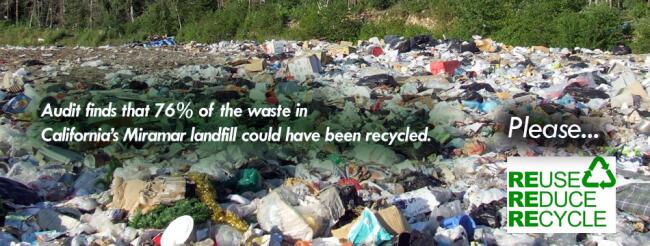Recycling pays large dividends for the Earth by saving resources, preventing pollution, and reducing carbon emissions, while helping municipalities save money by lowering disposal costs.
So why is the overall recycling rate languishing at 35% and the textile recycling rate hovering at 15%?
Study after study has shown that people recycle only if it is convenient to do so. For example, a landmark U.S. Government Accountability Office study identified ease and convenience as key factors that would help municipalities boost lagging recycling rates, and a 2014 Johnson & Johnson study found that the absence of recycling bins is the biggest barrier to recycling.
As landfill costs increase and the public's demand for green services grows, municipalities must look for ways to make it more convenient for consumers to recycle. It is especially important to find ways to increase textile recycling because: 1) the recycling rate is only 15% and disposal is high, 2) textiles are not included in municipal curbside collections, and 3) the textile manufacturing industry has an immense carbon footprint.
No Cost to Taxpayers
Textile donation bins operated by non-governmental organizations such as Planet Aid offer an opportunity to increase convenience at no cost to taxpayers. For the past 18 years, Planet Aid has been increasing textile recycling by educating and encouraging the public to recycle, while also responsibly placing and maintaining bins at convenient locations. Our work has helped save more than 1 billion pounds of textiles from needless disposal.
Today, recent complaints about clothing donation bins have prompted local councils to take action. The problem has to do with how the bins are being placed and managed by some operators. The issue has created a new challenge that had not existed just a few years ago. In response, some councils have simply banned all clothing donation bins from within their boundaries. However, this undermines recycling convenience for consumers and is unfair to legitimate operators.
Savvy Regs
The answer to the growing problem of poorly managed clothing donation bins by some organizations is not a wholesale ban, but smart, savvy regulation. Here are the five things that a good bin regulatory scheme should include:
- Clear performance benchmarks. Benchmarks should include requirements that bins be emptied often enough to avoid overflow and that the area around them be kept free of trash.
- Business license and insurance. At the very minimum, all operators should be required to have a business license and be insured. Municipalities seeking greater assurances could require bin operators to post a bond.
- Permitting. Permitting should be a streamlined process that requires operators to submit information about the number of bins sited or to be sited, written consent from the existing sites' property owner or lessee,
 and a schematic drawing of the property and bin location. An appropriate fee should accompany the permit application to cover all associated costs.
and a schematic drawing of the property and bin location. An appropriate fee should accompany the permit application to cover all associated costs. - Bin stickers. Local and/or state authorities should provide permit stickers for bins. Local enforcement officials can then easily determine which bins are permitted, which permits have expired, etc.
- Effective enforcement. Enforcement provision should specify how unlawfully placed bins will be removed and what penalties will be assessed for unlawful conduct.
For more information about bin regulation and to obtain a model ordinance, visit our Government Resources page.

